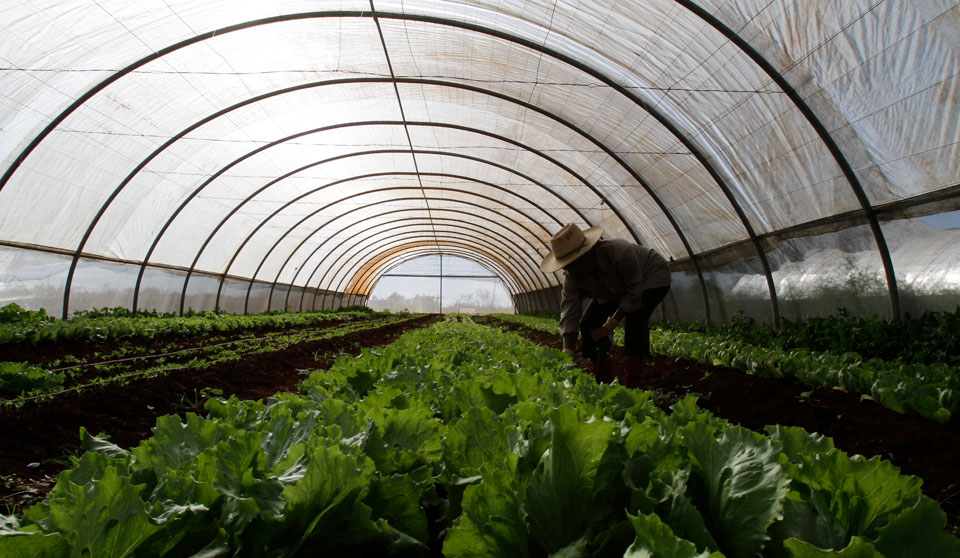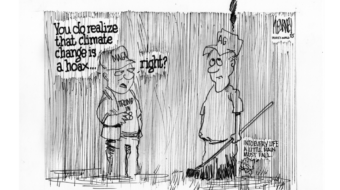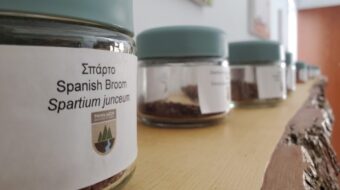
Cuba remains an enigma to many people in the United States, still shrouded in the mists of profound cultural and political differences. Due to the U.S. economic blockade of Cuba, most Cubans and Americans are unable to trade goods or ideas or to collaborate on scientific research. However, in the realms of environmental sustainability and organic farming, those of us in the U.S. have much to learn from our Cuban counterparts.
Cuba was recently ranked as the one of most sustainably developed countries in the world, according to the Sustainable Development Index. (The U.S. ranked 160th out of 164 countries in the same study.) Most of the farms in Cuba are organic. A recent collaborative study between researchers from the University of Vermont, Williams College, and Oberlin College in the U.S. and their counterparts at the Centro de Estudios Ambientales de Cienfuegos (Cienfuegos Center for Environmental Studies) in Cuba, showed that Cuban waterways are much cleaner than those in the U.S., partly due to the lack of synthetic fertilizer and pesticide runoff.
Cuba’s transition to organic agriculture began very unexpectedly. With the demise of its main trading partners, the Soviet Union and Eastern European socialist countries, in the late 1980s and 1990s, Cuba was unable to purchase commercial synthetic pesticides and fertilizers or cheap Russian oil—or even Soviet tractors—thus beginning a national experiment in organic farming. After the extremely difficult “Special Period” that Cuba experienced after the fall of the USSR, unused land was opened up to farmers and many urban farms sprang up in the cities.
Agribusiness in the U.S. has gone on an entirely different route in the same period of time. Farms have been consolidating at a rapid speed, as industrial ag companies seek to control—and, of course, profit from—all elements of food production. Small family farms are an endangered species, along with all the insect and birdlife that is lost in the pursuit of a monoculture monopoly.

U.S.-based agribusinesses extend beyond the country’s borders, too. For example, Monsanto (owned by Bayer) controls 70% of the seed market in Mexico. Furthermore, the neoliberal counter-reforms leading up to NAFTA reversed Mexican land reform; much of this acreage previously held by small farmers has been bought up by giant multinational corporations. This is devastating to Mexican family farmers, many of whom are being forced off the land after farming there for generations. Without agricultural work in their home country, these Mexican families are forced to migrate to the United States or seek employment at U.S.-controlled factories near the border. Clearly, globalized trade and monopoly do not help farmers in any country.
If the U.S. was as isolated from trade as Cuba is forced to be, would the country be able to support itself, even with all of its abundant resources? I suspect small-scale, organic farming communities would be the first to adapt. Diversified farming operations and a lack of reliance on synthetic chemicals could sustain a vibrant and healthy community.
Yet the vast majority of U.S. food production is controlled by massive, industrial-scale farms. The scientific research funded by corporations like Bayer/Monsanto claims that industrial grade chemicals like Roundup are harmless. But if that’s the case, why are those same companies paying $10 billion in damages to people who got cancer from glyphosate (the carcinogenic ingredient in Roundup)? Why are native insect and bird life disappearing with such astonishing speed? Why are waterways so contaminated that it alters the life forms that live within them and creates massive dead zones, like the one at the mouth of the Mississippi River in the Gulf of Mexico, where nothing can grow at all?
The systems of food distribution in the U.S. are even worse than the systems of production. This has become devastatingly clear during the COVID-19 pandemic, but for years before that, milk prices were tanking and farmers struggled to keep their operations going. (Similarly, the Great Depression of the 1930s was preceded by terrible years for farmers during the so-called “Roaring ’20s.”) The outrageous phenomena of food deserts and farmers being forced to plow their crops back into the ground somehow co-exist in the United States, a country that wastes between 30-40% of its food supply.
According to modern industrial agribusiness, the “go big or go home” mentality of corn, soybeans, and war-grade chemicals is the only path to “progress” in the agricultural world. Not so fast! Cuban agriculture is proving that there is another way.
[T]he scientists also found much lower levels of phosphorus and nitrogen pollution in Cuban rivers than in the United States where intensive farming and chemical fertilizer use is widespread. The new study shows dissolved nitrogen levels in Cuban rivers running at roughly a quarter to a third of those found in the Mississippi River—where excess nitrogen is a primary engine of the dead zone in the Gulf of Mexico. “Cuban river waters provide evidence that agriculture need not overload rivers, and thus reservoirs and coastal zones, with nutrients,” writes the 15-person research team.
– “In Cuba, Cleaner Rivers Follow Greener Farming,” report published by University of Vermont
A greater emphasis on farming cooperatives, planned distribution, and communal land use has proven to be effective in Cuban agriculture. The country is far more sustainably developed than it was before the collapse of the USSR and its forced entry into organic agriculture. Furthermore, unlike other Latin American countries with neoliberal economies which have opened their agriculture markets to multinational corporations like Bayer/Monsanto, Cuba’s small-scale farming and food production is still vibrant.
As an island nation, Cuba is exposed to the threats caused by climate change (such as stronger tropical storms, rising sea levels, and erosion) before the mainland U.S. feels them. Therefore, the country is taking many steps to ensure ecological sustainability, to reclaim land that was lost to the ocean, and to adapt its agricultural practices to the new challenge.
This has led to Cuba being the most sustainably developed country in the world. The United States has no plan resembling the Tarea Vida. (Although the proposed Green New Deal would be a massive step in the right direction, that plan likely isn’t going to be implemented any time soon.) Any such attempt to plan ecological sustainability and regenerative agriculture would inevitably be opposed by Bayer/Monsanto and company.
Yet I’m sure small family farmers, organic producers, conservationists, and environmental activists could readily develop the framework for such a plan. Farmers, who have a deep connection with the earth, and environmental scientists and activists could form partnerships to explore ways to support both the earth and the nation’s food needs.

Both Latin American culture (which has produced phenomenal results in sustainability, like in Cuba, and environmental protection, like in Costa Rica) and small farm culture are rooted in community. Indigenous American culture, too, relies on the importance of community and preserving the land for future generations. This communal mindset may seem to stand in the way of technical “progress” as agribusiness sees it, but really it’s one of the essential ingredients of conservation.
Farm communes of the 1960s and ’70s, too, emphasized communal life. And while it’s possible to find community in many different places, the collaborative labor of agriculture also provides a connection to the earth. It’s harder to care about something if you’re not directly involved in it. That’s why small-scale farmers, especially organic ones, are on the front lines of environmental restoration work.
Of course, since Cuba is a much smaller country, it is probably easier for environmental scientists to connect with farmers to the benefit of all involved. (After all, environmental sustainability work has much to learn from those who work the land directly.) But I think this type of solidarity between all concerned parties in the U.S. environmental movement is possible, although it may seem more difficult in a society where the ruling class does not hold solidarity as a key value.
The U.S. is critically important in the global response to climate change and environmental devastation. Yet, as we all know, it determinedly acts as if these threats don’t even exist.
Cuba only produces 0.1% of global fossil fuel emissions. So, no matter how much restorative environmental work the country does, it is overshadowed by the massive carbon emissions of the U.S.—the world’s biggest polluter.
Maybe it will take a crisis to turn the U.S. back towards organic farming like it did for Cuba. But if that ever does happen, we’ll first need to have a grassroots organization of people dedicated to restorative agriculture. That includes farmers, ranchers, environmental scientists, back-to-the-landers, student activists, you name it. We’re all connected by a common desire to care for the earth. We can learn a lot from Cuba and also from each other.








